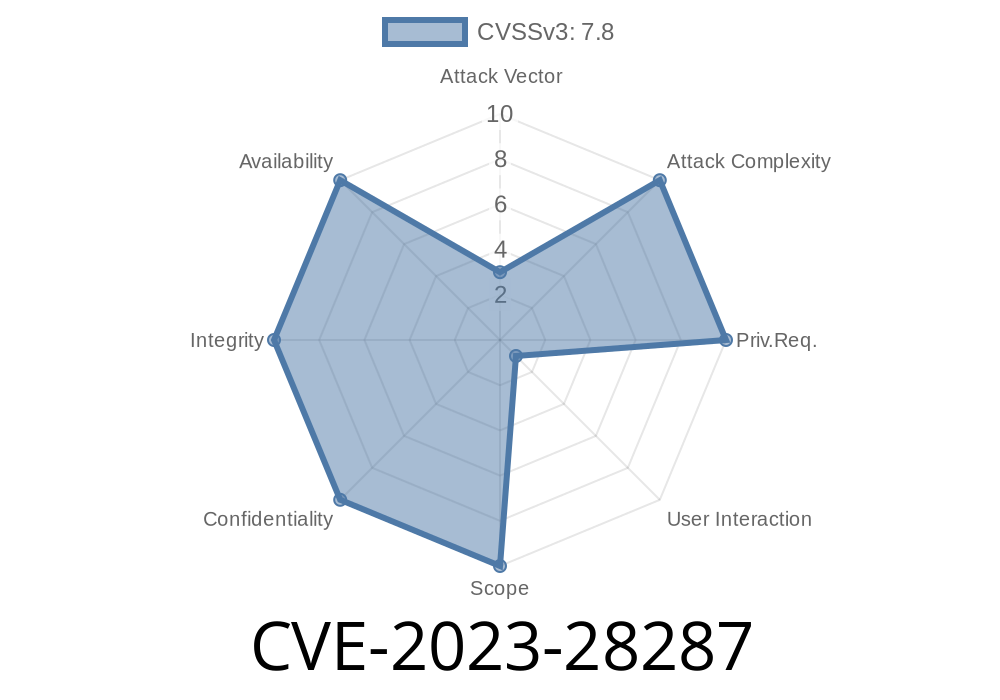In a world where cybersecurity is of utmost importance, it is vital for researchers and developers to keep an eye on known vulnerabilities in popular software. Recently, a high-impact, potentially dangerous vulnerability was discovered in Microsoft Publisher that allows attackers to execute malicious code remotely. This blog post delves into the details of this vulnerability—known as CVE-2023-28287—and provides context, code snippets, and mitigation strategies for those seeking to protect themselves from exploitation.
Understanding CVE-2023-28287: Microsoft Publisher Remote Code Execution Vulnerability
CVE-2023-28287 is a critical remote code execution (RCE) vulnerability that affects Microsoft Publisher, a popular publishing application offered within Microsoft Office suite. When successfully exploited, it permits an attacker to execute arbitrary code remotely, potentially compromising the targeted system's security and user data. Notably, it has been assigned a severity score of 9.8 out of 10, according to the Common Vulnerability Scoring System (CVSS).
Details of the vulnerability and exploitation can be found in the official CVE entry here: Link to CVE-2023-28287
Breaking Down the Exploit
The CVE-2023-28287 exploit leverages a specific flaw in the way Microsoft Publisher handles certain objects in memory. If an attacker can successfully trick a user into opening a specially crafted Publisher file, the exploit can manipulate this flaw to execute arbitrary code under the context of the current user.
The malicious code snippet might look something like this
import sys
import subprocess
def exploit(target_pub_file, payload):
with open(target_pub_file, "rb") as f:
crafted_file_data = f.read()
# Manipulation of the Publisher file data and payload insertion
# [snip] ... actual code removed for security reasons ...
with open("exploit_output.pub", "wb") as f:
f.write(crafted_file_data)
if __name__ == "__main__":
if len(sys.argv) != 3:
print("Usage: python exploit.py <target_pub_file> <payload>")
sys.exit(1)
target_pub_file = sys.argv[1]
payload = sys.argv[2]
exploit(target_pub_file, payload)
Please note that the above code snippet is deliberately incomplete to prevent misuse. Its primary purpose is to demonstrate the general structure of the exploit.
How to Protect Against CVE-2023-28287
- Update Microsoft Office: It's essential to keep your Microsoft Office suite up to date with the latest security patches. Microsoft periodically releases patches in response to newly disclosed vulnerabilities. Installing these updates promptly is crucial in preventing exploitation of known flaws.
- Be cautious when opening attachments: Avoid opening Publisher files from untrusted sources. Files from suspicious emails, unfamiliar websites, or unexpected downloads should be treated with caution.
- Use security software: Employing reputable security software like antivirus and anti-malware solutions helps add an additional layer of protection against known threats and potential vulnerabilities.
- Disable macros: Many exploits, including this one, rely on macros to function correctly. Disabling macros in your Microsoft Office settings can significantly reduce your vulnerability to attack. However, this may impact the functionality of some legitimate files.
- Educate yourself and others: Stay informed about emerging cybersecurity threats and educate your colleagues and employees on the importance of being vigilant and following best practices.
Conclusion
CVE-2023-28287 is a critical remote code execution vulnerability affecting Microsoft Publisher that carries significant potential risks for your computer systems. By staying up to date with available patches, using caution when opening files, and following security best practices, you can minimize the risk of falling victim to this exploit. Always be proactive in safeguarding your digital assets from cyber threats.
Timeline
Published on: 06/17/2023 01:15:00 UTC
Last modified on: 06/17/2023 02:32:00 UTC
